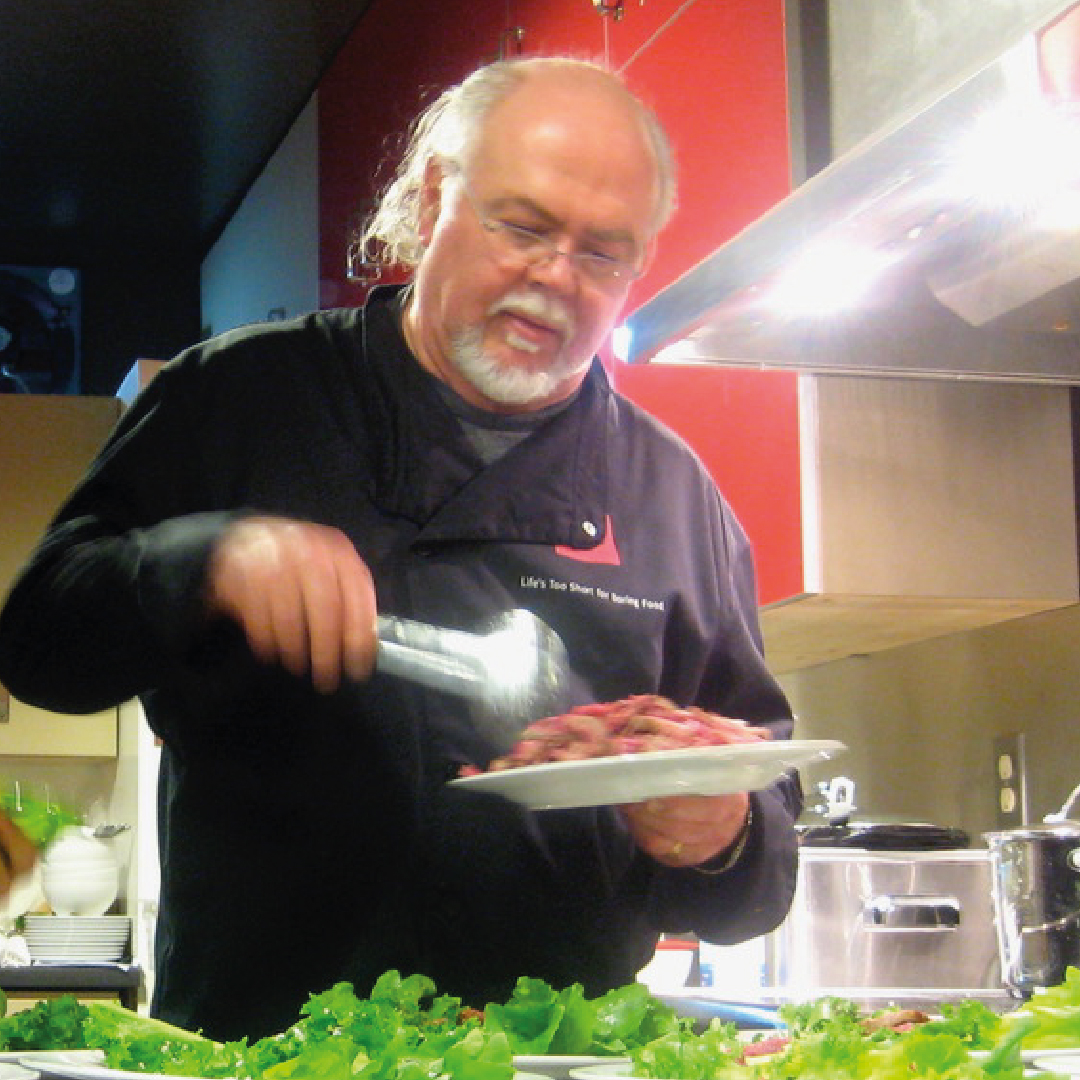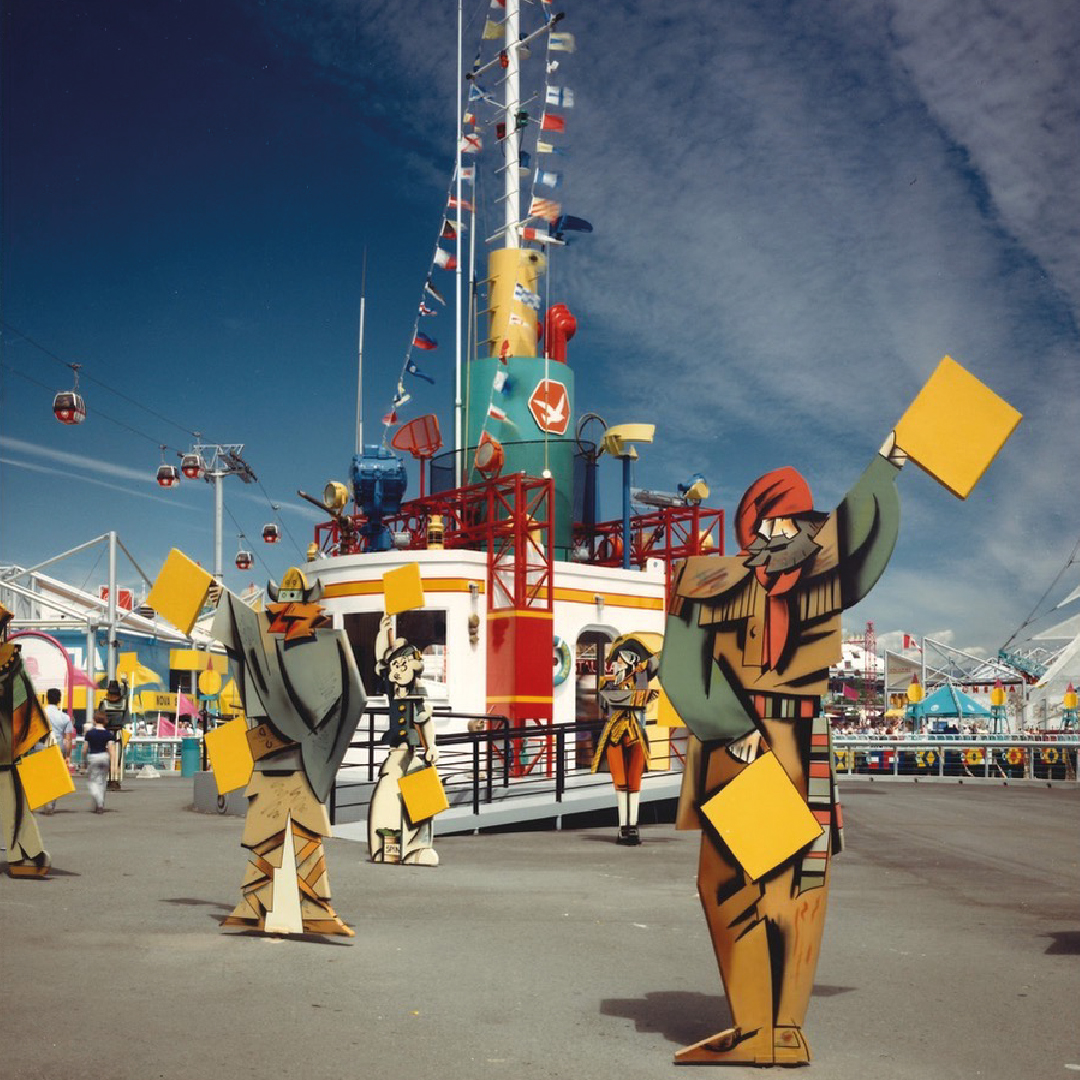

Don graduated from The Vancouver School of Art (now Emily Carr College of Art & Design) in 1972.
Not knowing any better, he immediately opened his own design business and soon developed a client base made up in roughly equal parts of corporate clients in the forestry and resource sector and arts and cultural organizations.
Don was amongst the Vancouver designers who came together in the mid seventies to form the Graphic Artists Guild. He hated the old-timey name (“I’m a designer, not an artist!”), but it reflected both the self-understanding of an older generation of practitioners who thought of themselves first and foremost as artists and craftsmen, illustrators, calligraphers and so on, and the fact that, young and old, they were all working with techniques and technology that had not significantly changed in a very long time: the ability to ink a half-point ruled border with perfectly radiused corners was an essential skill; type, which was still being set with hot lead, had to be specified to fit to the precise number of lines in a 60 page book or it all had to be set again; “comps” for presentation were painstakingly executed multimedia replicas in chalk, coloured pencil, marker, ink, paint and graphite.
Shortly after its formation, the Graphic Artists Guild amalgamated with the newly founded Society of Graphic Designers of Canada — providing credibility to the notion that the GDC was a national organization by becoming its B.C. Chapter. He has always held that the designers of the Graphic Artists Guild are all therefore founding members of the GDC, and ought to be formally recognized as such in the history of our organization.
Don believes in the importance of our national organization. Graphic design is the largest of the design professions in this country, the quality of our work is internationally recognized and we have made, and continue to make, a disproportionate contribution to the leadership of the global design community. The GDC has a responsibility to provide leadership not only to the professional discipline of graphic design, but to the entire Canadian design community. Don became the B.C. Chapter President in 1983, served as the Communication Design Representative on the Alliance for Canadian Design, a Federal Government initiative to develop human resources and industrial strategies for the Canadian design industry, and was the GDC National President from 1987 to 1990.
He was extremely fortunate to count arts and cultural institutions including Vancouver Children’s Festival, Vancouver Folk Music Festival, Vancouver New Music Society, Vancouver Art Gallery, Equinox Gallery, Burnaby Art Gallery, Surrey Art Gallery, the Alcan Lecture Series on Architecture and the Environment, Vancouver Playhouse Theatre, the Vancouver Symphony Orchestra, Vancouver New Music Society, YVR Art Foundation, and artist Robert Davidson (and a Canadian-based multinational law firm, a French mining company and an Alberta-based forestry manufacturer, all with a remarkable commitment to good design and bold marketing) among his clients. They gave him great opportunities to do interesting work, for which he is very grateful.
But when he set out to become a designer, it was his intention to focus on product and architectural design; he was admitted to Vancouver School of Art based solely on a body of sculptural work, but at that time the only design courses offered at VSA were in graphic design, so graphic design, along with sculpture, was where he ended up.
It wasn’t until the ’80s, that opportunities to take on 3-dimensional projects, notably the Canadian Pavilion, the Swiss Pavilion, The Marine Plaza, and a number of retail venues at Expo 86, presented themselves. His design practice continued to shift towards architectural, interior and product design, and led to an award at the Philips Electronics Concours Lighting Design Competition in 1987 and a Lieutenant Governor of British Columbia Medal for Excellence in Architecture (the latter in collaboration with the late, brilliant architect, Peter Cardew) in the 1990s.
Travels in Asia during the 1980’s also inspired the further exploration of another longstanding creative passion (sparked by youthful, rough-and-tumble work camp kitchen and fish boat galley gigs); the culinary arts. In 1987, South China Seas Trading Co. Limited, an importer and retailer of otherwise unobtainable spices and specialty ingredients was launched. South China Seas also operated a cooking school, where Don offered instruction in the cuisines of Asia, Latin America and the Mediterranean for more than three decades, until his partner, Joyce Chang Dickson (also a designer) and he, sold that business in 2022.
Currently, Don’s time is split between Vancouver and Tequisquiapan, where he is in the final stages of the restoration of his Mexican home.